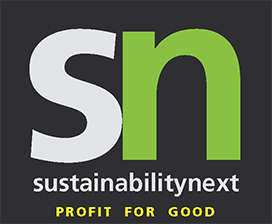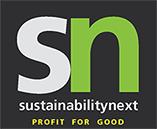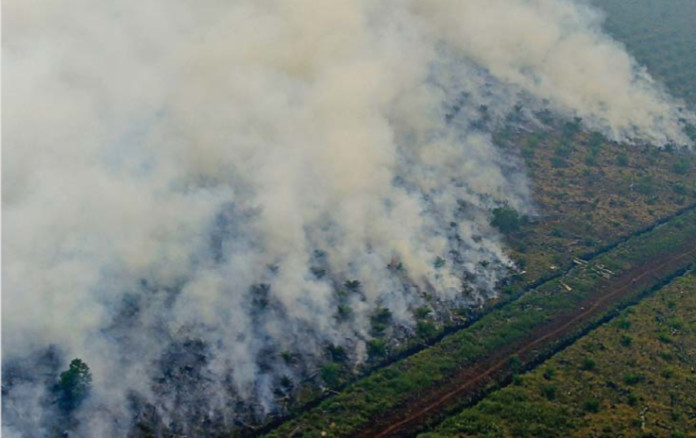The thick haze that blanketed much of Southeast Asia for a month carried the ashy remains of Indonesian forests and peatlands — burnt in many cases to clear land for producing palm oil, the world’s most popular edible oil. It’s an annual occurrence dating back decades, and this year it’s particularly bad: According to one report, the 2015 fires have emitted enough greenhouse gases to rival Germany’s annual output of CO2. And they’re growing worse.
Many proposals to fix the problem target the palm oil supply chain — from farmers and refiners, to the bankers and politicians who fund and license companies. That’s crucial. But to be successful, such efforts have to address demand as well. Unless consumers insist on buying palm oil that’s been sourced sustainably — and are willing to pay for it — companies and middlemen will continue to look for the cheapest possible ways to clear land, which means burning.
For several years now, campaigns promoting sustainable palm oil — oil produced with as little impact as possible on the surrounding environment — have been gaining momentum in Europe. The Netherlands has committed to using only sustainable palm oil by the end of this year. Indeed, the Roundtable on Sustainable Palm Oil (RSPO) — an industry group founded in 2004 — says that all of the palm oil used in the EU will be certified sustainable by 2020. Public education, advocacy and consumer pressure have all had an impact.
The problem is that the EU only represents around 11 percent of the market for palm oil. The world’s biggest consumer is India, which accounts for 15.6 percent of palm oil consumption globally, and 21 percent of all imports. China is the world’s third-largest importer, after the EU, and fourth-largest consumer. Together India, China, Pakistan, Egypt, Bangladesh, and Myanmar account for nearly half of global palm oil imports.
The RSPO’s efforts have barely made a dent in these emerging markets, admits Stefano Savi, the group’s Global Outreach and Engagement Director in Kuala Lumpur. Fewer than 100 of the RSPO’s more than 2,000 members are based in India and China. Savi says he expects around 30 percent of India’s palm oil to be certified by 2020, and only 10 percent of China’s.
Price Key Hurdle
Price remains a key hurdle. Across Asia, palm oil’s main selling point is its reputation as the “poor man’s oil.” In August, for example, crude palm oil imported into India was more than 37 percent cheaper than imported sunflower oil, and 19 percent cheaper than imported soybean oil. Properly sourced, sustainable palm oil can cost as much as 17 percent more than regular oil. For many Indians, whose per capita income was $1,595 in 2014 (as opposed to $51,590 in the Netherlands), that’s a stiff premium.
There’s no reason for activists to lose hope. Asia’s burgeoning, brand-conscious middle classes have shown that they care about the environment. In China, for instance, consumption of shark fins is declining, largely because of a years-long public-education campaign fronted by basketball star Yao Ming. (The process has been helped along by President Xi Jinping’s crackdown on official banquets and other extravagances.) International companies that have committed to using sustainable oil — such as McDonald’s, Post and Mondelez — could use those policies to burnish their brands in emerging markets.
Ultimately, though, the only way to change behavior in India and China will be to reduce costs. Currently, only half of the roughly 5.3 million tons of RSPO-certified sustainable palm oil is sold at a premium, though the proportion is increasing steadily, according to the RSPO’s Savi. The rest is sold as conventional palm oil to manufacturers and retailers who — for now — don’t see any commercial advantage in sustainability.
Whatever losses producers accrue are at least partially covered by a trading scheme whereby they can sell certificates — akin to carbon trading credits — to companies that want to support sustainable production. However, current market prices for those certificates are well under $1 per metric ton, underlining weak demand.
Europe may be able to lend a hand. In search of carbon savings, the EU is keen to expand the use of sustainable bio-fuels. The dregs of palm oil refining could be one source. According to a 2014 industry report, India already has the capacity to produce 435,000 metric tons of palm oil-based biodiesel annually.
Industry, governments and NGOs could cooperate to channel sustainably-produced palm oil into that supply chain. Doing so would open new markets to Indonesian farmers, while giving them a profitable reason not to burn land to make a living. These are all long-term solutions, of course. But they’re critical if the skies over Southeast Asia are to be cleared for good.
http://www.bloombergview.com/articles/2015-10-15/india-and-china-are-key-to-ending-asia-s-haze







